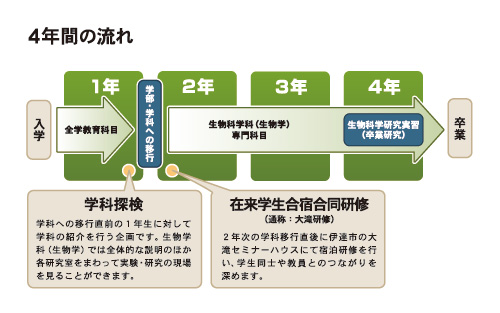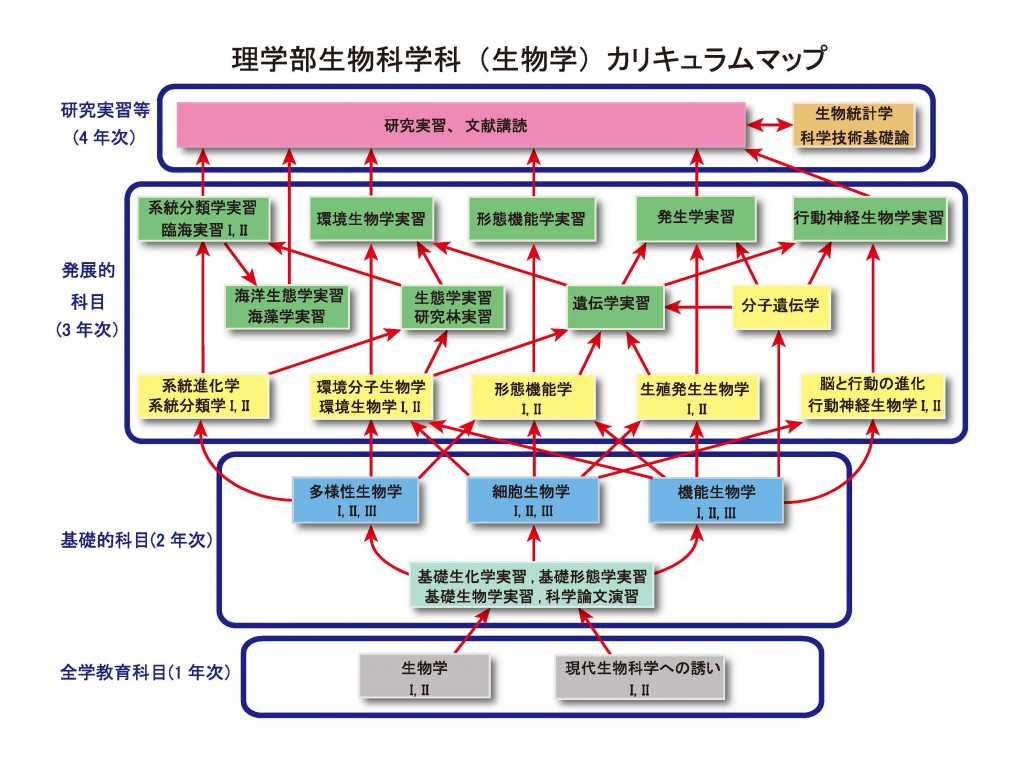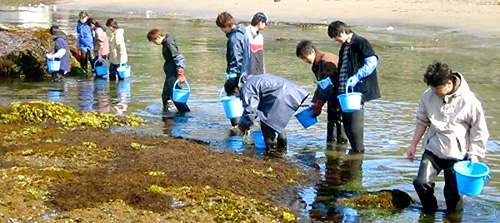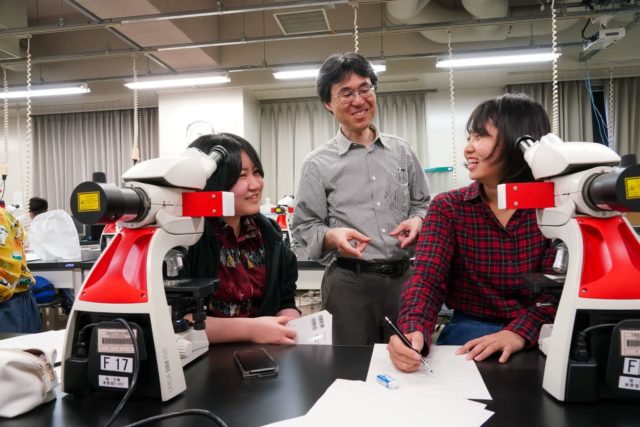Through systematic lectures, various practical exercises, and the exchange of ideas with their teachers, students can acquire knowledge in fields unique to Hokkaido.
A flowchart of the 4 years of study
The 1st year
In the first year, students learn a common curriculum in science and obtain a comprehensive liberal arts / basic education in the Department of General Education.
In the middle and at the end of the first year, professors hold an event to introduce their schools and departments to students to help them choose the department for the second year. The Department of Biological Sciences (Division of Biology) provides students with an overall explanation and introduction of the laboratories and research stations. The students can also attend the ‘Science Globe’ during which professors talk about their own research.
The 2nd and 3rd year
The specialized curriculum starts in the second year. Students have systematic lectures covering a wide range of topics from molecules to cells to populations and ecology. Additionally, laboratory courses are provided for each field to support the knowledge acquired in the lectures. There are also several field trips held at Akkeshi and Muroran Marine Biological laboratories.
The 4th year
In the fourth year, students are assigned to different laboratories to do original research during one year under the supervision of a faculty member. This gives them training in cutting-edge methods and technologies used in life sciences and learn the basic principles of living organisms thus gaining a better insight into what is biology.
Introduction of courses and lectures
For details, please refer to Hokkaido University Syllabus Search.
Major Subjects/Inter-School of Science Subjects
Introduction to Cell Biology, Introduction to Biological Diversity
Major Subjects/Department of Biological Sciences (Division of Biology), Eligible Year: 2nd year
Readings of Scientific Literature, Laboratory Exercise in Basic Morphology, Laboratory Course in Basic Biochemistry, Laboratory Course in Basic Biology, Functional Biology I, Functional Biology II, Functional Biology Ⅲ, Cell Biology I, Cell Biology II, Cell Biology III, Biodiversity Studies I, Biodiversity Studies II, Biodiversity Studies III
Majo
Biostatistics, Laboratory Course in Genetics, Laboratory Course in Phycology, Field Course in Marine Ecology, Environmental Biology I, Environmental Molecular Biology, Environmental Biology II, Laboratory Course in Environmental Biology, Cell Function and Structure I, Cell Function and Structure II, Laboratory Course in Cell Structure and Function, Systematics and Evolution, Systematics and Taxonomy I, Systematics and Taxonomy II, Ecological Surveys of Biodiversity in Forest, Behavioral Neurobiology I, Behavioral Neurobiology II, Laboratory Course in Behavioral Neurobiology, Laboratory Course in Systematic Botany, Reproductive and Developmental Biology I, Reproductive and Developmental Biology II, Laboratory Course in Ecology, Biological Science Techniques, Advanced Studies in Biology, Literature Survey in Biology, Laboratory Course in Biology, Special Lecture I, Special Lecture II, Special Lecture III, Special Lecture IV, Special Lecture V, Laboratory Course in Systematic Zoology, Brain, Behavior and Evolution, Laboratory Course in Animal Development, Molecular Genetics, Laboratory Course in Marine Biology I, Laboratory Course in Marine Biology II
Full learning environment
Laboratory course in marine biology
Life originated and evolved in the ocean. That is why the biodiversity in the sea far exceeds that in the land. Consequently, in order to understand living organisms we need to know the oceans and its life. Field courses in marine biology are provided in order for students to learn the “diversity and way of life” in the sea. They are held at Akkeshi and Muroran Marine Biological laboratories, two facilities of Hokkaido University located in the coast and with a rich northern marine biota.
The field courses in marine biology are held four times a year. The ” Laboratory Course in Marine Biology I” provides an overview of marine invertebrate diversity, whereas the ” Laboratory Course in Marine Biology II” teaches seaweed diversity and the methods to study them from the perspective of cell biology. Finally, during the “Field Course in Marine Ecology” students learn the relationships between marine organisms, their surrounding environments and other organisms. During these courses, students will have plenty of opportunity to discuss biology and life with friends and instructors.
Study abroad system
Hokkaido University supports “study abroad”. This is facilitated through exchange programs, short-term trips, and various types of scholarships. For details, please consult the study abroad guide for Hokkaido University students.
Learning environment
For the students of the Department of Biological Sciences (Division of Biology), classes and courses are conducted mainly at the Faculty of Science Building No. 5. Many laboratories are located in this building, sharing a modern and well organized learning environment. For example, the department has fluorescence microscopes that can be used by all students as well as a full range of laboratory instruments and equipment used to provide high level molecular cell biology training.




